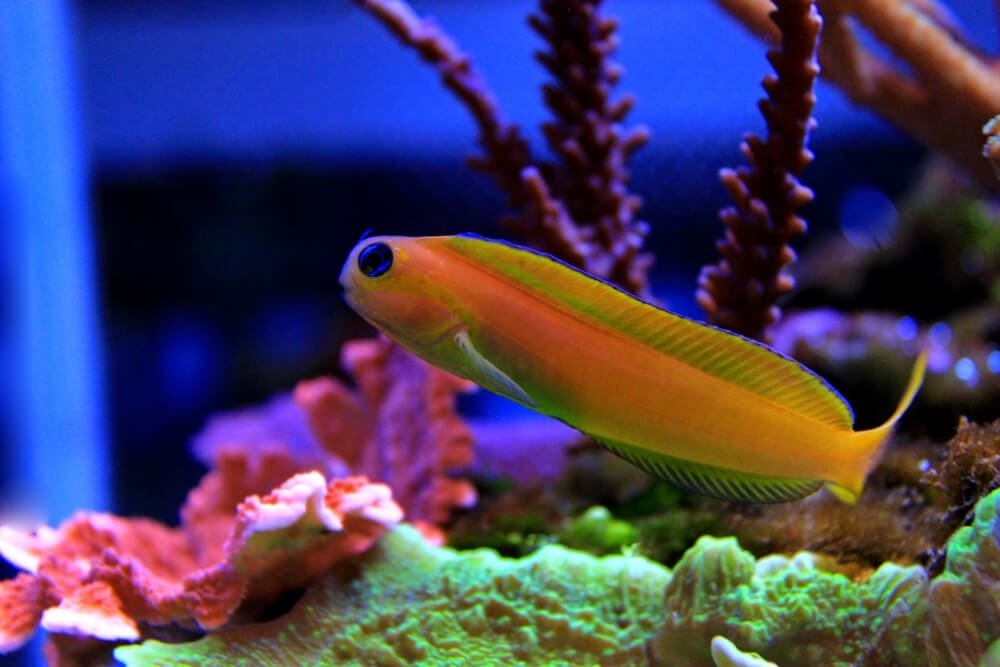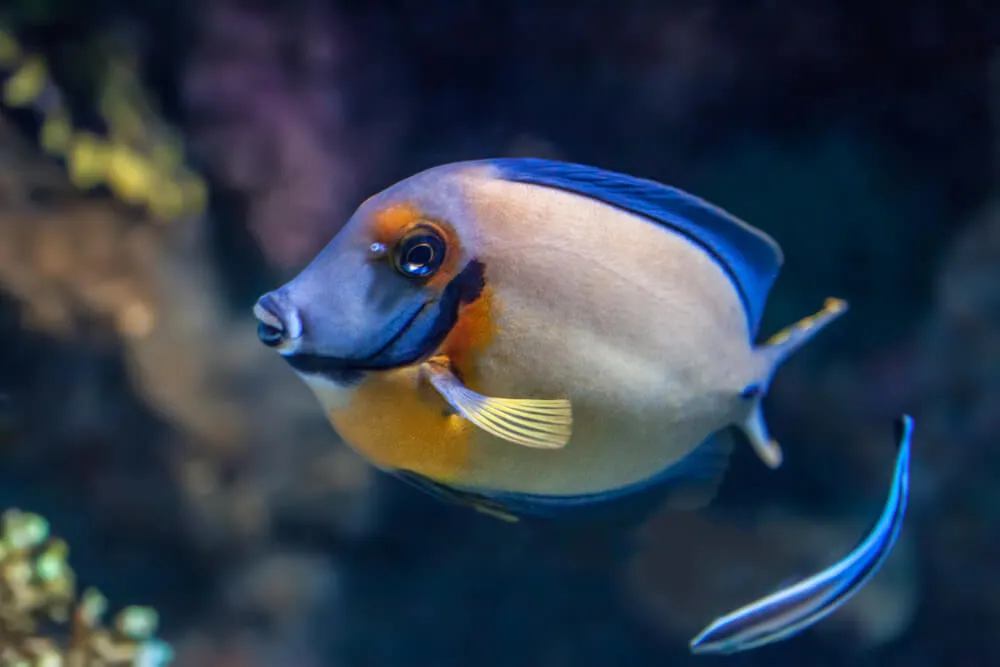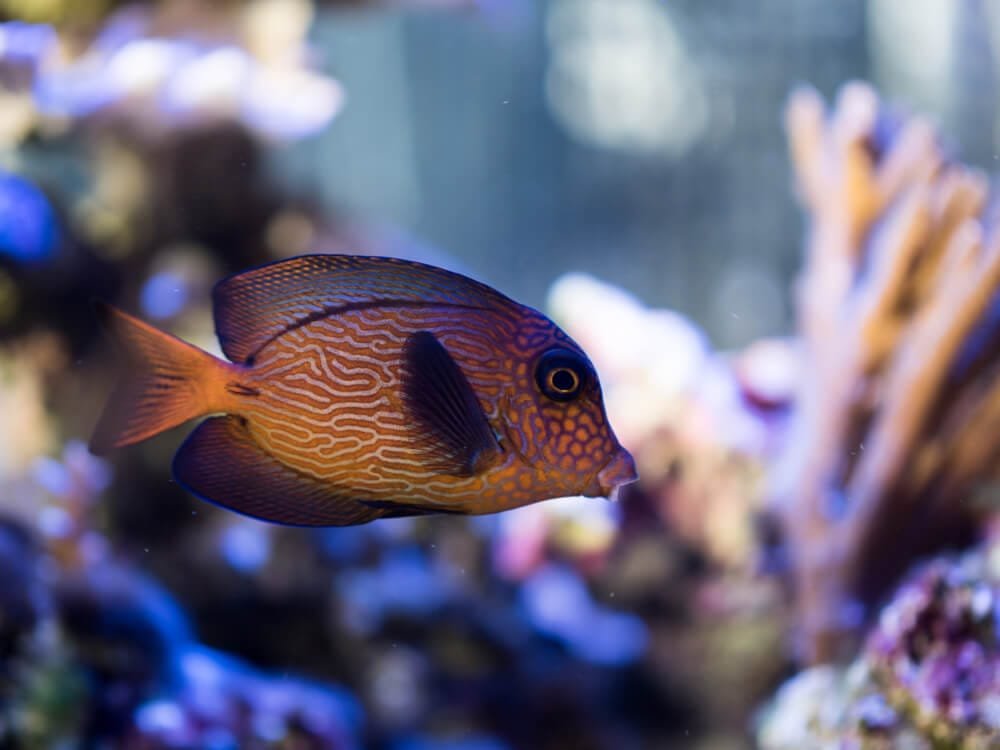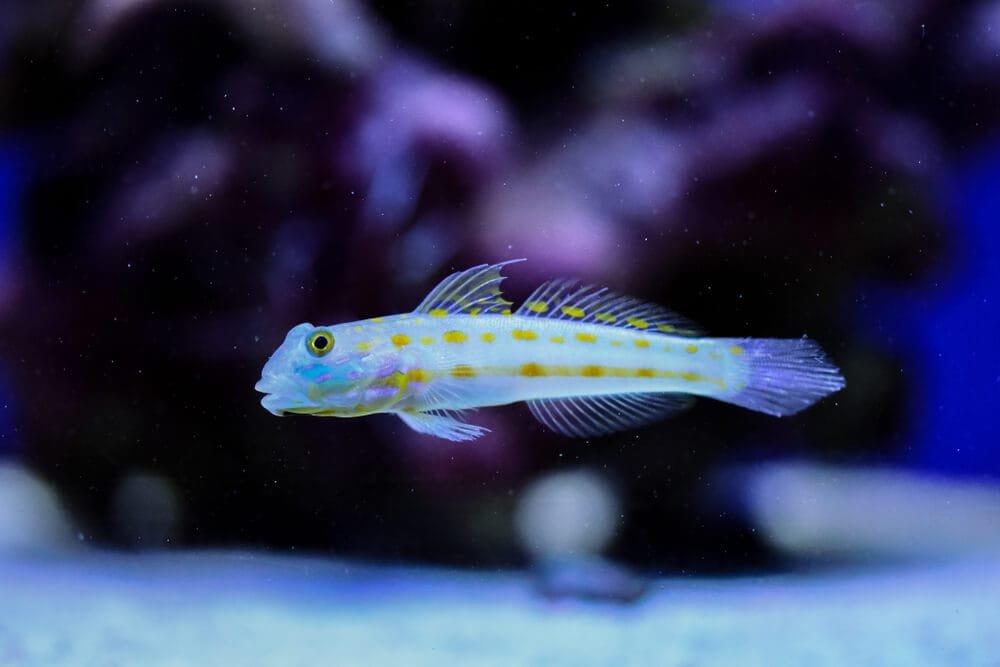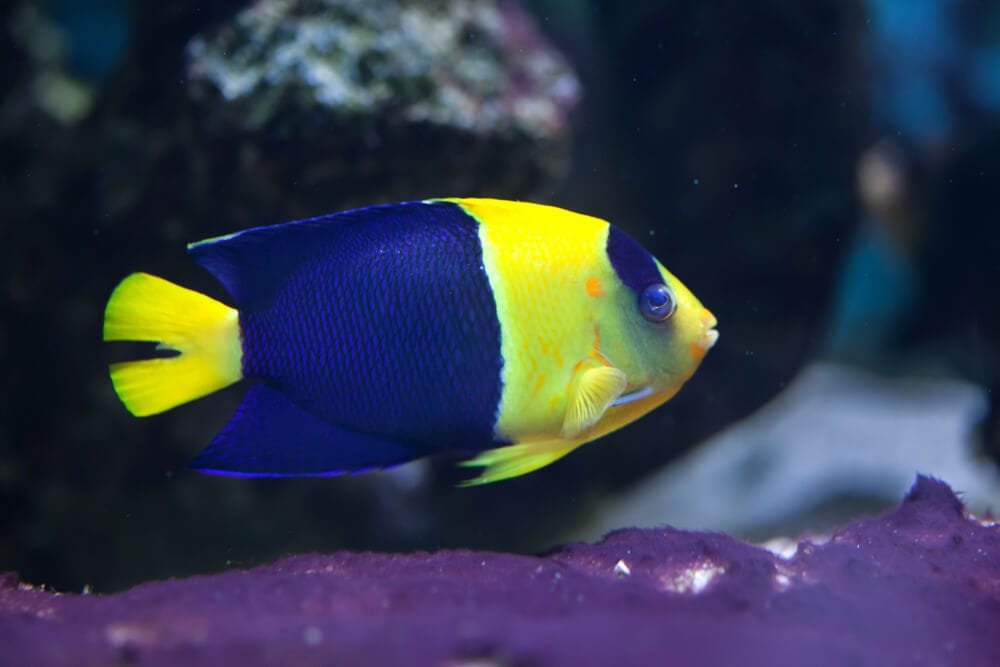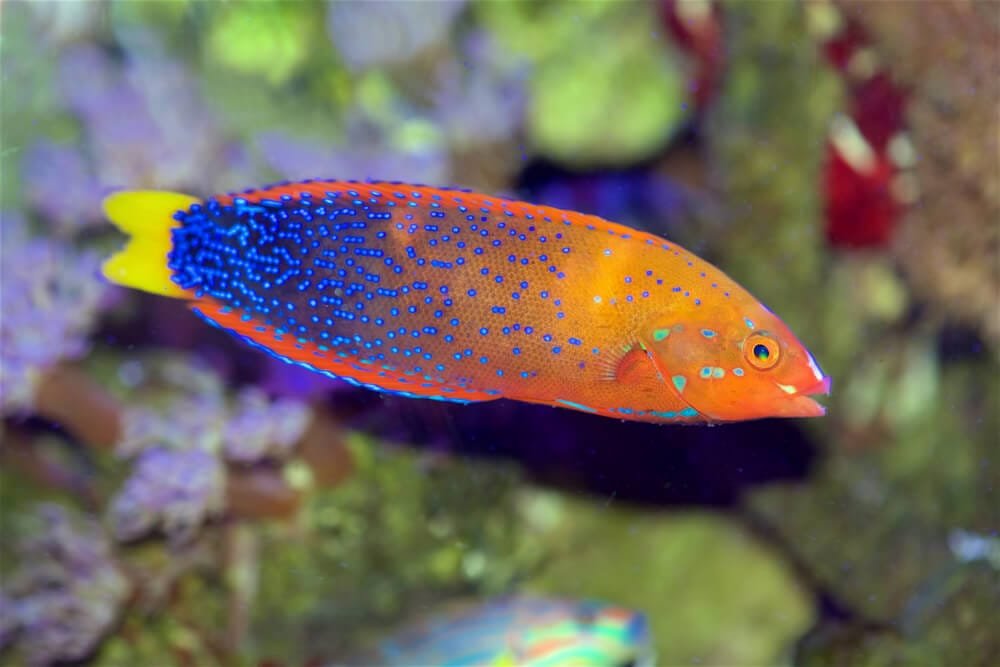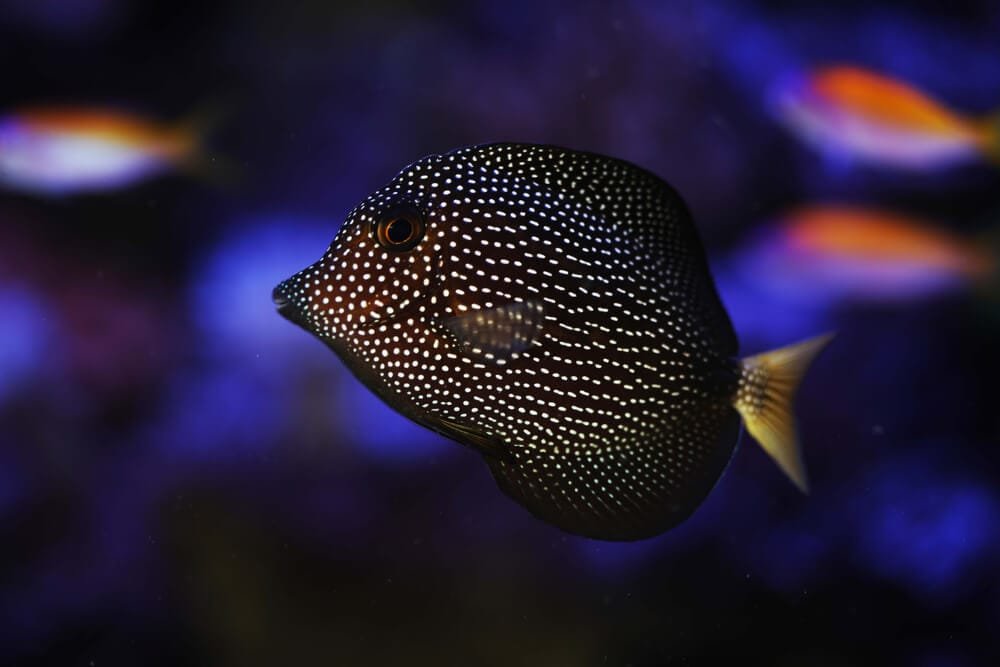Mandarin Goby Care: Tank Requirements and Feeding Habits
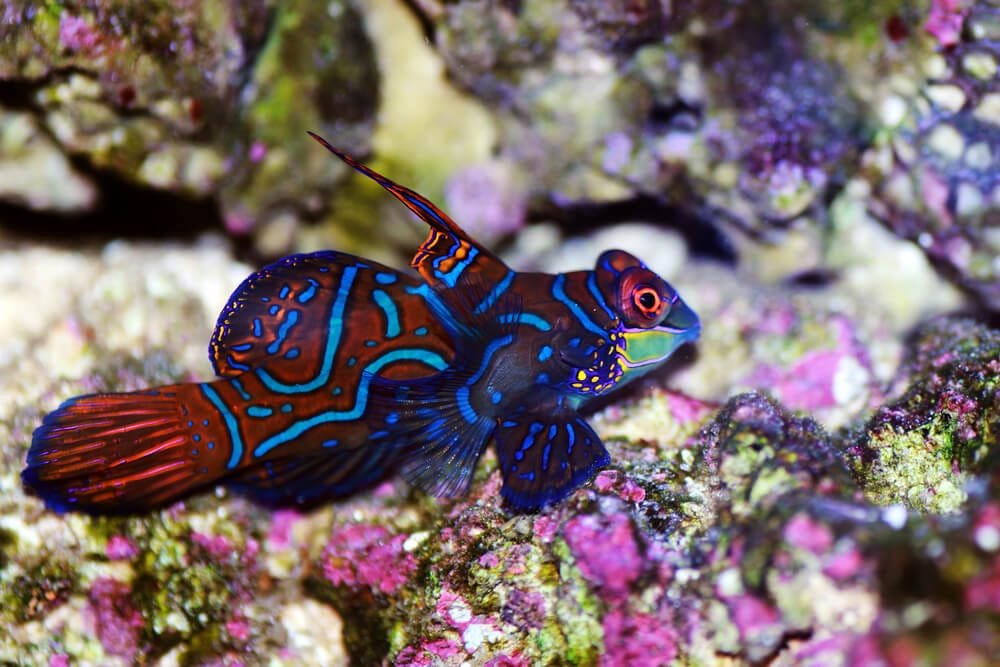
Imagine yourself strolling along the pristine beaches of the Indo-Pacific, captivated by the vibrant colors and mesmerizing creatures that call the ocean home. Suddenly, your gaze locks onto an enchanting creature gliding gracefully through the water – the Mandarin Goby. With its kaleidoscope of electric hues and intricate patterns, this tiny fish is a true marvel to behold. Join us as we uncover the extraordinary world of the Mandarin Goby, exploring its captivating beauty and unveiling the secrets that make it a true gem of the sea.
Appearance
Color
The Mandarin Goby is renowned for its stunningly vibrant colors. With a body covered in bright shades of blue, orange, green, and yellow, it is truly a sight to behold. The intricate patterns and intricate designs on its scales give it an almost ethereal appearance, making it a highly sought-after fish in the aquarium trade.
Size
Despite its breathtaking beauty, the Mandarin Goby is relatively small in size. On average, it grows to about 2.5 inches in length. Its petite stature adds to its allure, as it can easily fit into smaller tanks and adds a touch of elegance to any aquarium setup.
Distinctive Features
One of the most distinctive features of the Mandarin Goby is its elongated dorsal fin that runs along its back. This fin, adorned with delicate filaments, gives the fish a unique and graceful appearance. Additionally, the Mandarin Goby has a small mouth with a protruding snout, which it uses to hunt for its prey along the sandy substrate of coral reefs.
Habitat
Natural Range
The Mandarin Goby is native to the warm coastal waters of the Pacific Ocean. It can be found in various regions, including the Philippines, Indonesia, Australia, and parts of Japan. Its natural range extends from the Ryukyu Islands in the north to the Great Barrier Reef in the south.
Preferred Environment
The Mandarin Goby favors shallow, calm waters with plenty of coral formations. It seeks refuge among the intricate branches of coral reefs, where it can find an abundance of food and suitable hiding spots. These reefs are essential for its survival, providing both sustenance and protection from predators.
Coral Reefs
Coral reefs play a crucial role in the Mandarin Goby’s habitat. As a benthic fish, it relies on these complex ecosystems for survival. The intricate structures of coral reefs create a mosaic of hiding places, allowing the Mandarin Goby to blend seamlessly into its surroundings. It is often found darting in and out of small crevices and cracks, searching for prey and evading potential threats.
Behavior
Solitary Nature
The Mandarin Goby is known for its solitary nature. It prefers to live alone or in small, non-aggressive groups. This behavior is partly due to its territorial instincts, as the fish establishes a home range within its preferred coral reef habitat. While it may occasionally interact with other fish during feeding or breeding, it generally seeks solitude.
Feeding Habits
Feeding for the Mandarin Goby is a specialized process. It predominantly consumes small invertebrates, such as copepods, amphipods, and other tiny crustaceans. To capture its prey, the Mandarin Goby employs a unique hunting technique. It hovers above the sandy substrate, using its keen eyesight to detect any movement. Once it spots a potential prey item, it rapidly extends its jaw and sucks the prey into its mouth, all within a fraction of a second.
Reproduction
The breeding behavior of the Mandarin Goby is a fascinating spectacle. Males engage in an elaborate courtship display, flashing their vibrant colors and displaying their dorsal fins to attract a female mate. Once a compatible pair is formed, they engage in a synchronized dance, circling each other and releasing gametes into the water column. The fertilized eggs then ascend to the surface, where they develop until hatching.
Diet
Carnivorous Diet
The Mandarin Goby is strictly carnivorous, meaning it relies on a diet of meat-based foods. Its specialized feeding habits necessitate a constant supply of small live or frozen prey. As mentioned earlier, copepods and amphipods form a significant portion of its diet, along with other tiny crustaceans and larvae.
Prey Items
The Mandarin Goby is an opportunistic feeder and will consume anything that fits into its small mouth. Along with copepods and amphipods, it also feeds on small worms, shrimp larvae, and other small invertebrates. Its ability to hunt for its prey among the coral reef substrate allows it to satisfy its dietary requirements in its natural habitat.
Interaction with Humans
Aquarium Trade
The Mandarin Goby’s mesmerizing beauty and vibrant colors have made it a highly sought-after species in the aquarium trade. Many hobbyists are captivated by its elegance and unique appearance, desiring to showcase it in their home aquariums. However, it is crucial to note that the Mandarin Goby requires a specialized setup and a well-established food source to thrive in captivity.
Conservation Efforts
Due to its popularity in the aquarium trade and habitat degradation, the Mandarin Goby faces several conservation challenges. Overcollecting for the aquarium trade has led to declines in wild populations. Various organizations and conservationists are working diligently to promote sustainable collection practices and to raise awareness about the importance of preserving the species’ natural habitat. Protecting coral reefs is crucial for the Mandarin Goby’s long-term survival.
Tank Requirements
Tank Size
When considering housing a Mandarin Goby in an aquarium, it is essential to provide a suitable tank size. Due to its small size, a tank with a capacity of 30 gallons or more is generally sufficient. However, larger tanks are recommended as they allow for more stable water conditions and provide more swimming space for the fish.
Water Parameters
Maintaining suitable water parameters is crucial for the well-being of the Mandarin Goby. It thrives in tropical marine aquariums with temperatures ranging from 72 to 80 degrees Fahrenheit and a pH level between 8.1 and 8.4. Additionally, ensuring high water quality and stability is essential, as the Mandarin Goby can be sensitive to fluctuations in water parameters.
Hiding Spots
Creating a suitable environment for the Mandarin Goby involves providing ample hiding spots within the aquarium. This can be achieved by incorporating live rock or artificial structures that mimic the intricate branches and crevices of coral reefs. These hiding spots offer the Mandarin Goby a sense of security and help replicate its natural habitat, reducing stress and promoting overall well-being.
Compatibility
Suitable Tankmates
When choosing tankmates for the Mandarin Goby, it is essential to consider its peaceful nature and specific habitat requirements. Generally, other small, peaceful fish species that inhabit similar environments, such as gobies, blennies, and some non-aggressive clownfish, make suitable companions. Care should be taken to avoid aggressive or territorial species that may pose a threat or compete for resources.
Aggression Towards Other Fish
While the Mandarin Goby is generally peaceful, it is worth noting that it may exhibit territorial behavior towards its own species or similar-looking fish. It is advisable to keep only one Mandarin Goby per tank unless the aquarium is sufficiently large to accommodate multiple individuals without causing conflicts.
Breeding
Challenges
Breeding the Mandarin Goby in a home aquarium setting can be challenging. It requires careful attention to replicating its natural habitat, providing suitable mates, and ensuring optimal water conditions. Furthermore, the synchronized spawning behavior and the subsequent care and survival of the eggs present additional challenges for even experienced aquarists.
Spawning Behavior
The Mandarin Goby’s spawning behavior involves an elaborate courtship display by males to attract females. Once pair bonding occurs, the male entices the female to a chosen nesting site, where she will deposit a single egg, followed by the male fertilizing it. This process is repeated until a substantial number of eggs are laid. The male then nurtures and protects the clutch until the eggs hatch, ensuring their survival.
Health and Disease
Common Health Issues
The Mandarin Goby is generally a hardy fish when provided with appropriate care. However, it can be susceptible to common health issues that affect many marine species, such as parasites, bacterial infections, and fungal infections. Proper quarantine procedures, regular veterinary check-ups, and maintaining optimal water quality can help mitigate these concerns.
Preventive Measures
To prevent common health issues and promote the overall well-being of the Mandarin Goby, there are several preventive measures that aquarists can take. Regular water testing, proper nutrition, and a well-maintained aquarium with clean filtration systems are essential. Additionally, introducing new tankmates only after quarantine and implementing a thoughtful acclimation process can help minimize the risk of introducing diseases to the tank.
Conclusion
The Mandarin Goby is a true gem of the marine aquarium world. Its stunning colors, intricate appearance, and unique hunting behavior make it a highly desired species among hobbyists. However, providing suitable care for the Mandarin Goby requires attention to its specific needs, such as a well-established food source, proper tank size, and a well-maintained environment. By understanding and respecting its natural habitat and implementing responsible aquarium practices, we can help conserve the Mandarin Goby and ensure its continued presence in our underwater ecosystems for generations to come.
